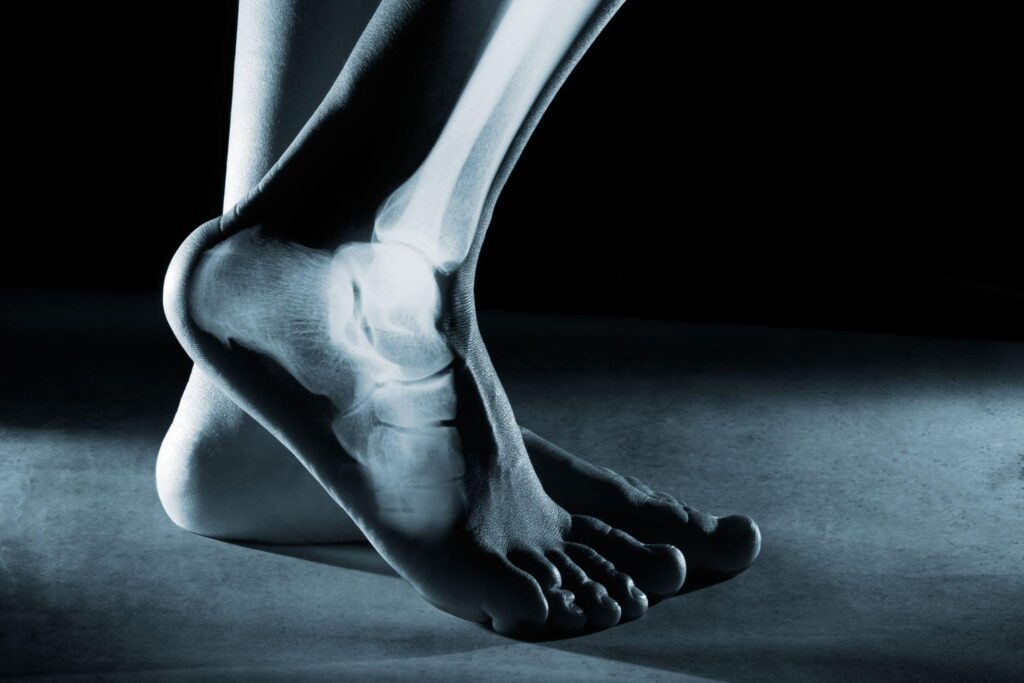Sports Injury
Ankle Arthroscopy
Ankle arthroscopy is a minimally invasive surgical procedure that allows visualization and treatment of the inside of the ankle joint using a small camera and specialized instruments.
When do you required a Ankle Arthroscopy?
Ankle arthroscopy may be required when conservative treatments such as rest, physical therapy, and medication have failed to relieve ankle pain or improve ankle function, and when there is a suspected underlying issue with the ankle joint such as cartilage damage, loose bodies, ligament tears, or bone spurs.
TYPES OF ANKLE INJURIES
There are several types of ankle injuries, including:
Ankle sprains: stretching or tearing of the ligaments that connect the bones in the ankle.
Ankle fractures: break in one or more of the bones that make up the ankle joint.
Achilles tendonitis: inflammation of the Achilles tendon that connects the calf muscles to the heel bone.
Peroneal tendonitis: inflammation of the peroneal tendons that run along the outside of the ankle.
Plantar fasciitis: inflammation of the plantar fascia, a thick band of tissue that runs along the bottom of the foot.
Ankle impingement: compression of the bones and soft tissue in the ankle joint, leading to pain and restricted movement.
Syndesmotic injuries: injuries to the syndesmotic ligaments that connect the tibia and fibula bones in the ankle.
Osteochondral injuries: damage to the cartilage and underlying bone in the ankle joint.
PRECAUTIONS TO BE TAKEN
Precautions to prevent ankle injuries may include:
Wearing proper footwear that provides support and stability to the ankle.
Using ankle braces or taping to provide extra support during activities that involve repetitive ankle movements or high impact.
Gradually increasing activity level and intensity to avoid sudden strains on the ankle.
Maintaining strength and flexibility in the ankle and surrounding muscles through regular exercise and stretching.
Avoiding activities that may put excessive stress on the ankle, such as jumping or sudden changes in direction.
Paying attention to the surfaces you walk or exercise on, avoiding uneven or unstable surfaces.
Seeking treatment for any underlying conditions, such as flat feet, that may increase the risk of ankle injuries.
Resting and allowing adequate time for recovery after an ankle injury before resuming physical activity.


FAQ
General Question
We help you clear up your doubts
Ankle arthroscopy can be used to treat a range of conditions, including ankle impingement, synovitis, osteochondral injuries, ligament tears, and loose bodies in the ankle joint.
The benefits of ankle arthroscopy include smaller incisions, less scarring, faster recovery time, and reduced risk of complications compared to traditional open surgery.
Recovery time for ankle arthroscopy depends on the type and extent of treatment performed, but generally involves several weeks of rest, immobilization, and physical therapy.

Testimonial
What Customer Says

Entrepreneur
Lorem ipsum dolor sit amet, consectetur adipiscing elit, sed do eiusmod tempor incididunt ut labore et dolore magna aliqua

Manager
Lorem ipsum dolor sit amet, consectetur adipiscing elit, sed do eiusmod tempor incididunt ut labore et dolore magna aliqua

HR Manager
Lorem ipsum dolor sit amet, consectetur adipiscing elit, sed do eiusmod tempor incididunt ut labore et dolore magna aliqua

HR Manager
Book Now
Make An Appointment
Opening Hours
- 08.00 AM - 20.00 PM
- 08.00 AM - 17.00 PM
- 09.00 AM - 17.00 PM
- 09.00 AM - 18.00 PM
Stay Connected with Orthopedics Kerala
This website uses cookies to provide you with the best browsing experience.


Lorem ipsum dolor sit amet, consectetur adipiscing elit, sed do eiusmod tempor incididunt ut labore et dolore magna aliqua